Let’s start this (hopefully) comprehensive guide about tea and tea benefits with a very simple question: what is tea?
What is tea?
Tea refers to an aromatic beverage prepared by pouring boiling or hot water over the leaves of an evergreen sub-tropical shrub native to Asia, scientifically known as Camellia sinensis or the tea plant (sinensis means “from China” in Latin).
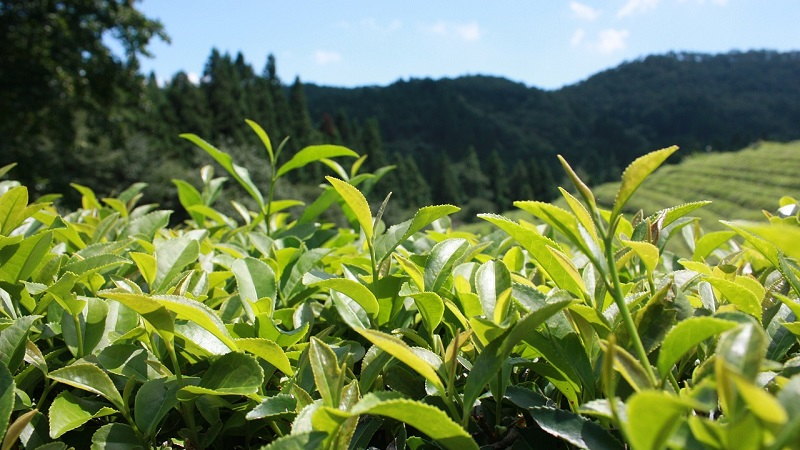
Tea plantation
The tea plant can have around 3 metres in height (some wild forms even 15 metres) with leaves of varying thickness depending on the altitude where the tea plant grows. Generally, the higher the altitude, the thinner and higher quality the tea leaves are.
Herbal tea that is growing in popularity in the UK in recent years is actually not a Camellia based beverage, so technically it shouldn’t be called a ‘tea’ although we prefer to call it such.
To make it more complicated, tea seeds may be used to produce tea oil, which should not be however confused with tea tree oil that is not actually related to Camellia sinensis.
Many people ask questions whether tea or coffee is more popular and consumed drink. We can’t answer that with an absolute certainty but research shows that tea is the second most consumed drink after water in the world. You can find answers to some of other frequently asked questions contributing to the tea vs coffee debate here: Tea Or Coffee: 12 Frequently Asked Questions.
Types of tea
There are five main types of tea coming from the plant, Camellia sinensis – Green, Black, Oolong, White and Pu-erh. To put it very simply, the difference between them lies in the extent of oxidation process (often inaccurately called fermentation).
Then there is a number of other varieties and blends (we could call them speciality teas or gourmet teas) produced and consumed depending on personal tastes and preferences as well as medical recommendations (particularly the herbal tea).
A full list of all different tea types would be very long and with no real purpose (including, for example, decaf tea). We’ll focus on the common types of tea that include:
Green tea
Green tea retains its vital colour because it’s un-oxidised. During processing, the leaves are heat treated so as to eliminate the enzyme causing oxidation.
In China, green tea is processed by pan-firing or roasting the leaves which brings out a wide range of mouth-watering flavours ranging from citrus to smoky.
The Japanese steam the tea leaves at high levels of temperature making them change colour ranging from deep grass green to light sencha-pale green.
Black tea
This is the most popular variety of tea in the West and the UK indeed (did you know that there is English, Scottish or Irish breakfast tea?). It consists of younger tea leaves which are picked, withered, rolled, oxidised and then fired.
As opposed to the other tea varieties, black tea leaves are fully oxidised. Though now done by machine, quality black tea processing is best done by hand.
Borrowed from the British, the long running trend in black tea is to create blends where various kinds of tea are combined to elicit a particular flavour.
Oolong tea
These are semi-oxidised teas mainly cultivated in Taiwan and Mainland China. The larger and mature leaves are usually picked, withered, rolled and then oxidised before being fired. The level of oxidation may vary between 10 and 80 percent. Oolong teas come in a variety of aromas and flavours.
White tea
This is a light processed tea traditionally grown in China and picked for a few days in a year. The tender shoots which are picked are first allowed to weather and then dried to prevent oxidation.
White tea which is now grown in Sri Lanka and Darjeeling is said to have the most delicate aromas and flavours. Its nuances are gentle and evoke asparagus or bamboo like flavours.
Pu-erh tea
This tea comprises larger leaves which are aged for a number of years. In fact, the most valued Pu-erh tea is that which has a light dusting of mould.
Before being aged, the leaves are compressed into various shapes and then exposed to bacteria and microflora which ferments the tea in a manner similar to yoghurt or wine. Pu-erh teas give a dark hearty low caffeine brew.
Herbal tea
Also known as tisane, herbal tea refers to a beverage that is made from the decoction or infusion of spices herbs or other plant materials in hot water. Normally, herbal doesn’t contain caffeine and it can be served hot or cold.
History of tea (and afternoon tea)
If we can rely on myths, the history of tea can be traced back to China where it was supposedly discovered in 2700BC by the mythological Chinese emperor and herbalist known as Shennong or Shen Nung.
Tea became firmly established in China only much later during the Tang Dynasty which existed between 618 to 907AD.
The most remarkable documentation of tea in China was done by a writer known as Lu Yu who wrote the first book about tea called the Tea Classic.
After China, tea was introduced to Japan and in the latter half of the 16th century; tea was brought to Europe by Portuguese traders and missionaries. Most of the tea consumed at that time was green tea.
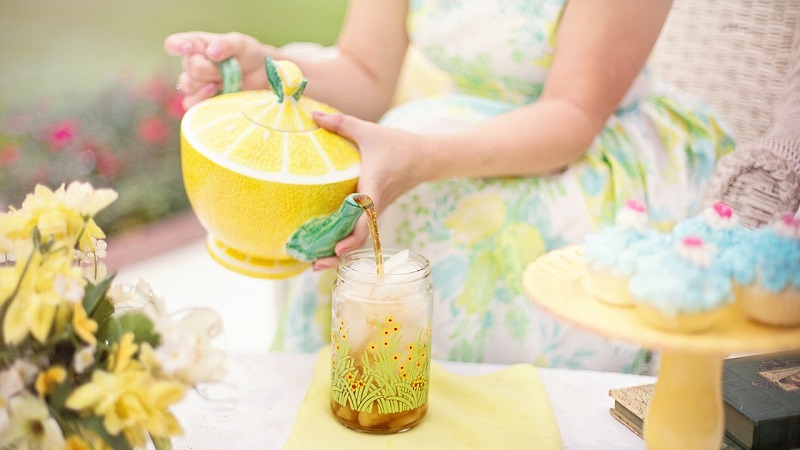
In Britain, the first dated reference to tea was done by Catherine of Braganza in a newspaper advert in 1658 where she called the tea – China Drink. At that time the East India Company was responsible for importing Chinese teas to England.
Since then Brits have become one of the most tea drinking nation in the world (per capita) with their own tea rituals (read on how to make proper British tea).
Afternoon tea is accredited to the 7th Duchess of Bedford called Anna who took a pot of tea and a light snack to get rid of a sinking feeling she experienced during late afternoons. From there henceforth, friends joined in and together they had tea in her Woburn Abbey creating a summer practice that has now been adopted all over the world.
Read also: English Writers And Their Love For Tea.
Tea accessories
The culture of taking tea has lots of accessories associated with it that make the whole tea drinking experience an enjoyable one (particularly if you throw in a few tea puns). The main categories in tea accessories come from the top consumers of tea that is Britain, Japan and China. Among the common accessories in English breakfast and afternoon tea include teapots, teabag holders, infusers and strainers, cream and sugar vets as well as spoons. You can even try to use a French press or cafetiere to make tea.
Teapot
There are lots of varieties of teapots based on the materials they are made of including ceramic pots, clay pots (e.g. authentic Brown Betty teapot), glass teapots with infuser, stump teapots, and enamelled cast-iron teapots.
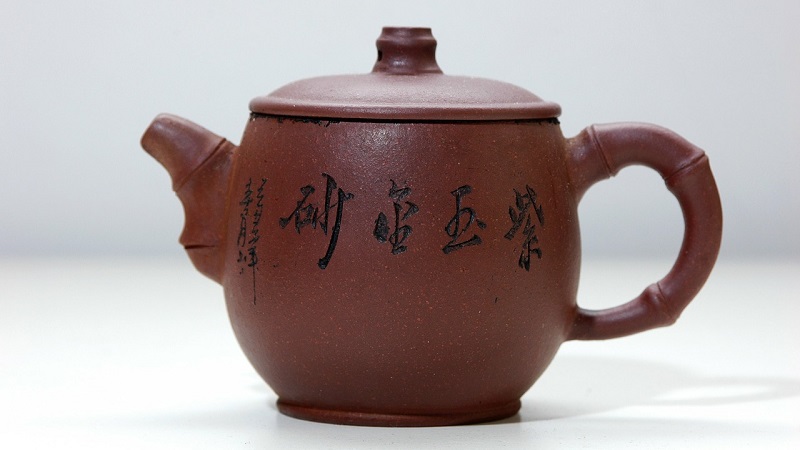
When choosing teapots, you should bear in mind the following:
Visibility – Glass teapots give you excellent visibility when making teas with stylish leaves or blooming flowers. The glass surface doesn’t affect the taste.
Heat retention – Ceramic and cat-iron teapots have the highest heat retention and distribute heat evenly. When glazed, these teapots can be used to brew different tea varieties because like porcelain teapots they don’t absorb the flavours.
Enhanced infusion – Clay pots particularly when unglazed are the best because they take on the flavours of the brewed tea giving you enhanced infusion.
Ease of cleaning – Enamelled cast-iron teapots are easier to clean because of the enamel coating which prevents the tea from staining the pot.
Teapot types
| Material | Pros | Cons |
|---|---|---|
| Glass | - Excellent visibility | - Not great heat retention - Delicate |
| Ceramic | - High heat retention - Not absorbing flavours | - None |
| Porcelain | - Not absorbing flavours. so you can use one teapot for various tea types | - Poor heat retention |
| Clay | - Absorb flavours with use, which enhances the infusion | - Can be used only for one type of tea as it absorbs flavours |
| Cast Iron | - Excellent heat retention | - Heavy build - Easy to over steep tea without infuser - Iron can have impact on the taste if not enamel-coated |
Tea warmer
These are accessories that will keep your tea warm thanks to an illuminating candle. They are made from different materials include cast iron, glass, porcelain and ceramic.
Tea infuser and strainer
A tea infuser refers to a device where loose, dried tea leaves are put for brewing or steeping in a teapot full of hot water (or in a tea thermos). A tea strainer on the other hand is a device placed over or in a tea cup with the purpose of catching loose tea leaves as tea is poured.

There is no much functional difference between the tea infuser and strainer only that tea infusers are typically put in the top of a teapot so as to contain the tea leaves during the brewing process.
How to make tea
When it comes to making tea, different communities and to extent countries have their own style of doing things. However, the following is one of the popular tea making processes that will guarantee you a proper cup of well-brewed tea.
Step 1 – Ensure you run the tap first so that the water can be aerated. It’s recommended you use water which has just boiled once because it has the required level of oxygen which will prevent your tea from tasting flat.
Step 2 – Swirl boiling water inside the teapot so as to warm it and also warm the cups using the water from the teapot.
Step 3 – If you want strong tea, use three or four teaspoons of loose tea for a 4-cup teapot. Otherwise, if you are using teabags, two teabags are sufficient. Thereafter, pour freshly boiled water to the teapot then stir and leave it for about four to five minutes to brew. The longer the time you give it, the stronger the brew.
If you want milk, a splash of semi-skimmed or whole milk can make the tea even tastier.
Benefits of tea
As one of the most beloved beverages on the planet, and with the increasing amount of scientific research being published regarding the health benefits of natural and herbal teas, it is easy to see why tea is a dietary staple for people all over the world.
From calming upset stomachs to boosting metabolism to providing antioxidant protection, the numerous positive health benefits of various natural and herbal teas provide more than enough reason for you to drink this versatile and perennially popular beverage on a daily basis (although you can drink too much tea or even smoke tea).
So let’s have a look at some of tea benefits (in alphabetical order):
Black tea benefits
Black tea provides a dark colour when steeped in water, and although it offers a strong flavour, it has a surprisingly low caffeine content.
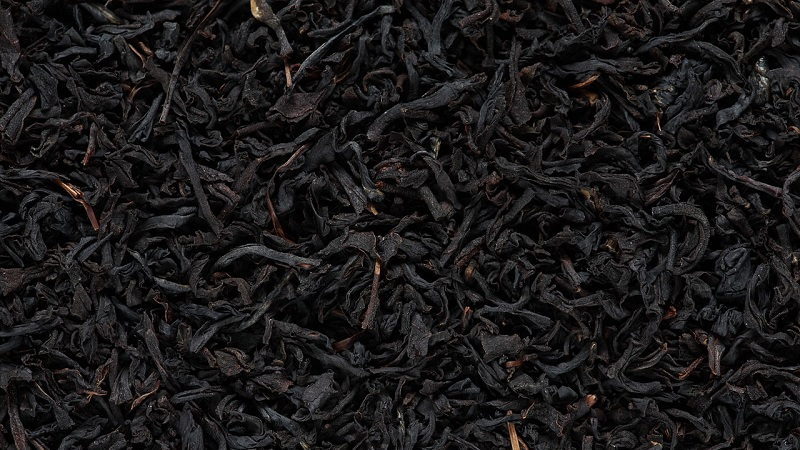
This unique beverage contains natural compounds known as flavonoids, which strengthen the immune system and help to eliminate bacteria. Not only that, but black tea contains small amounts of fluoride, which help to promote oral health.
Chai tea benefits
This pungent beverage is made from several potent medicinal herbs. The most prominent benefit of chai tea is its ability to act as an anti-inflammatory agent, which aids in the prevention of a wide array of physical ailments. In addition, chai tea is loaded with robust antioxidants that have been linked to the prevention of certain types of cancer, as well as cardiovascular disease.
Chamomile tea benefits
Among the many herbal teas currently on the market, chamomile tea (or camomile tea if you want) stands out as one of the most well-known due to its rich history as a natural antacid and sleep aid.
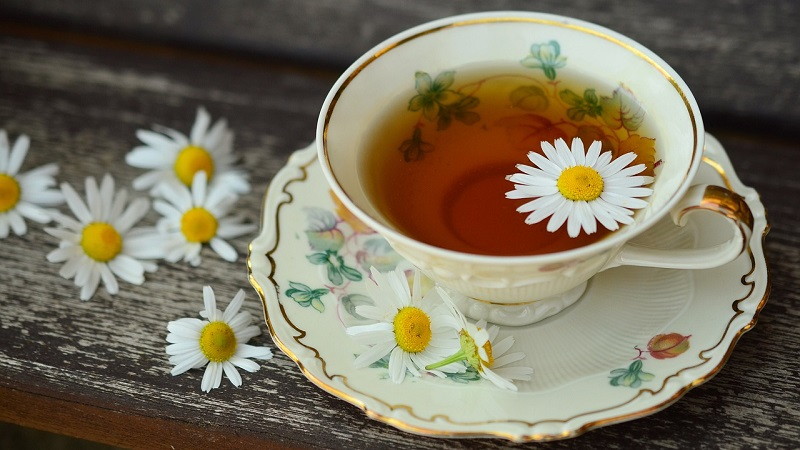
There are two basic types of chamomile that are used for herbal teas: German chamomile (Matricaria retutica) and Roman chamomile (Chamamelum nobile).
Of the two major types, German chamomile is the most popular, and has received the most attention in terms of clinical studies. People have used German chamomile for centuries to treat various ailments including upset stomach, bronchial irritation (e.g., chest colds), gum inflammation, tooth abscesses, and various skin conditions such as eczema, psoriasis and chicken pox.
Roman chamomile is often used to treat upset stomach, and to help combat insomnia. Over 1 million cups of chamomile tea are consumed every day, and this “wonder beverage” is a popular choice for helping to ease various aches and pains, relieve irritated skin and soothe colicky babies.
Cinnamon tea benefits
Cinnamon tea is best known for its exotic, spicy taste, but what often goes overlooked is its ability to lower levels of LDL (“bad”) cholesterol in the bloodstream. This property alone makes cinnamon tea a valuable addition to your regular diet, as it can protect your heart health and keep cardiovascular disease at bay.
Cinnamon also has strong anti-fungal, anti-bacterial and anti-viral properties, enabling your body to better combat a wide variety of potential ailments including the common cold, chest congestion, stomach flu, indigestion, and yeast infections.
Dandelion tea benefits
Made from those fun little puffy-topped weeds that populate meadows all across the world, dandelion tea has been used for medicinal purposes for centuries.
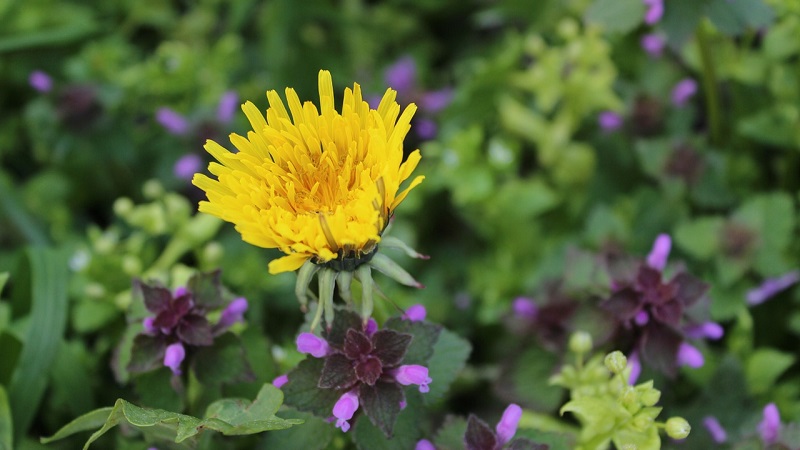
It contains more beta-carotene per serving than carrots (not an easy feat), and it also contains significant amounts of important minerals such as potassium, magnesium and iron.
Dandelion tea also helps to alleviate symptoms of several different ailments, including diabetes, liver and kidney problems, bloating, and constipation. It is often sourced as diuretics.
Fennel tea benefits
Made from the ubiquitous Mediterranean plant that bears the same name, fennel tea was used in ancient Egypt, India and China as a cure for snake bites. One regular cup of fennel tea contains a healthy dose of important antioxidants such as Vitamin A, Vitamin C and Vitamin D, and it also provides a generous supply of key nutrients such as potassium, iron, magnesium, zinc, and manganese. The most prominent and widely cited health benefit of fennel tea, however, is its ability to improve digestion.
Ginseng tea benefits
Ginseng tea has garnered worldwide popularity as a potent herbal beverage. It is commonly cultivated in China, India and Japan, but western countries with climates that are conducive to growing ginseng (e.g., the United States and Canada) have also begun to cultivate this widely acclaimed drink.
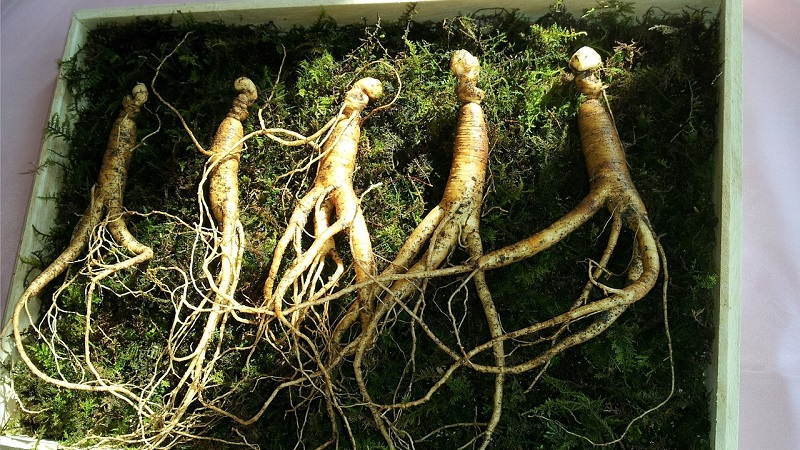
Based on research published by the American Academy of Family Physicians, one of the most notable benefits of ginseng tea is its anti-carcinogenic (cancer-fighting) properties. Not only does this tea help to reduce the risk of various forms of cancer, but it has also been cited for its role in providing relief from menstrual issues, improving digestion, reducing obesity, and bolstering the immune system.
Ginseng tea also plays a significant role in relieving anxiety, arthritis, and asthma. For the romantics out there, it should also be noted that ginseng tea is commonly recommended to help out areas of sexual dysfunction, particularly in men.
Green tea benefits
Green tea is perhaps the most widely hailed tea in existence, and is considered by many to be one of the healthiest beverages on the market due to its uniquely potent nutrients and powerful antioxidant properties.
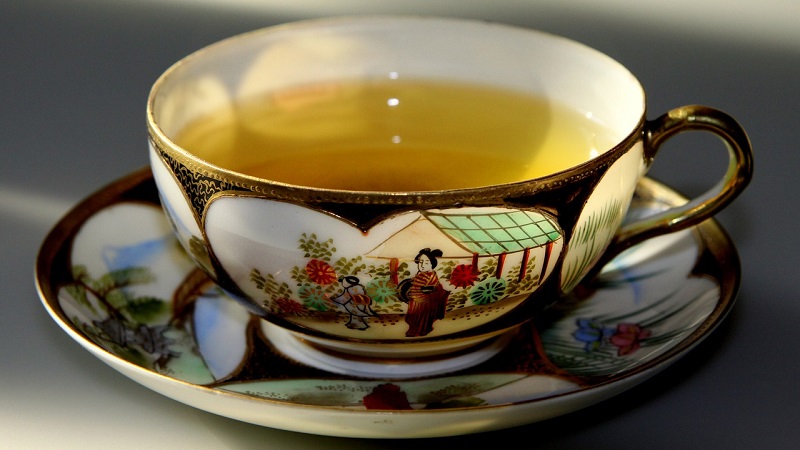
One of the “secret weapons” behind green tea’s effectiveness is that it contains high amounts of antioxidant-rich bioactive compounds known as polyphenols, which bolster the immune system and facilitate rapid recovery from free radical damage. The polyphenols found in green tea have been linked to a reduced risk of various major diseases including type II diabetes, cardiovascular disease, breast cancer and prostate cancer.
We have recently published a more detailed article about benefits of green tea if you are interested.
Herbal tea benefits
Herbal teas are comprised of various herbs, seeds, fruits, or roots that release key nutrients when steeped in hot water. Perhaps one of the most attractive characteristics of herbal tea is that it is caffeine-free and drug-free, providing nourishment and healing to the body without having to resort to synthetic, chemically-based concoctions.
Not only do herbal teas offer a variety of pleasant flavours, but they also stimulate the senses and hydrate the body. Various herbal teas have been used since ancient times to promote good health, and for many cultures, drinking herbal tea is considered to be an integral element of their time-honored traditions.
Hibiscus tea benefits
Hibiscus tea has been in use since the days of ancient Egypt, being a preferred drink of the pharaohs in order to maintain normal temperature levels in the body. Like green tea, hibiscus tea is loaded with potent polyphenols, but the particular types of polyphenols found in this tea contribute specifically to kidney and liver health. The anti-urolithiatic properties of hibiscus tea help to prevent the formation of kidney stones, and this powerful drink can also aid in the prevention of liver steatosis (a.k.a. “fatty liver”).
Jasmine tea benefits
Made from jasmine flowers and green tea, jasmine tea is not technically considered to be an “herbal tea”, but it has been used in a similar manner for centuries in order to stave off all kinds of maladies. This tea carries a very distinct scent and flavour, and can be made in a variety of different ways based on the particular type of strength or grade that you prefer.
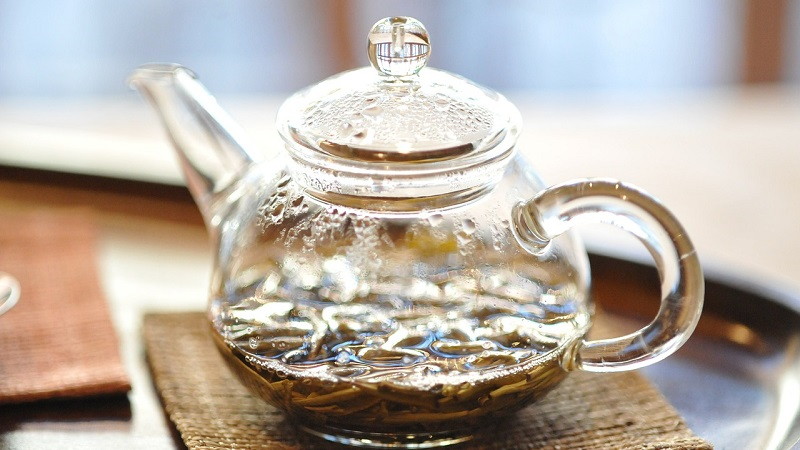
Perhaps the most widely acclaimed aspect of jasmine green tea is its strong antioxidant properties, which help the cells of the body to guard against free radical damage. It is also widely believed that the aroma of jasmine tea can act as an efficient stress reliever due to its ability to stimulate the olfactory system, prompting the release of various chemicals in the body that can aid in relaxation and enhance mood.
Liquorice tea benefits
Liquorice tea is extremely popular among holistic therapists and herbalists due to the extensive list of health benefits that it offers, including relieving constipation, easing arthritis and other inflammation-related disorders, treating bronchial irritations, relieving stress and easing depression, easing pre-menstrual symptoms (PMS), and preventing the buildup of plaque in the blood vessels.
Matcha tea benefits
Matcha tea is a green tea that is typically stone-ground and converted into a fine powder before being mixed with water to form a potent “natural elixir”.
Its robust antioxidant properties help to fight the effects of aging and harmful UV radiation, boosting the immune system and keeping your skin looking youthful.
Matcha tea is also loaded with an array of organic compounds known as catechins, which have been widely recognized for their ability to fight certain cancers.
Nettle tea benefits
Nettle is a hardy wild plant that is abundant throughout Europe. It also grows naturally in Africa, Asia and North America. Because it is a perennial plant that comes back from the roots rather than growing from scattered seed, you will find it in the same location for years on end. Good places to look for nettles include thickets, woodlands and along fence lines. They prefer rich, moist soil, so look for them is shaded places with a steady supply of water.
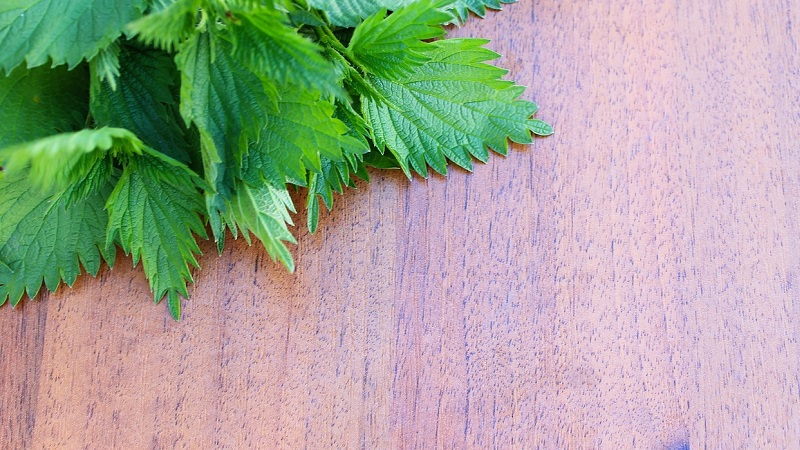
Nettle tea benefits include analgesic and anti-inflammatory effects that are great for arthritis; it helps with seasonal allergies, urinary problems and much more, so that we have decided to prepare a separate article about all benefits of nettle tea.
Oolong tea benefits
Derived from the Chinese word roughly translated to mean “black dragon”, oolong tea is a rich and highly potent herbal tea made from the leaves of the Camellia sinensis plant.
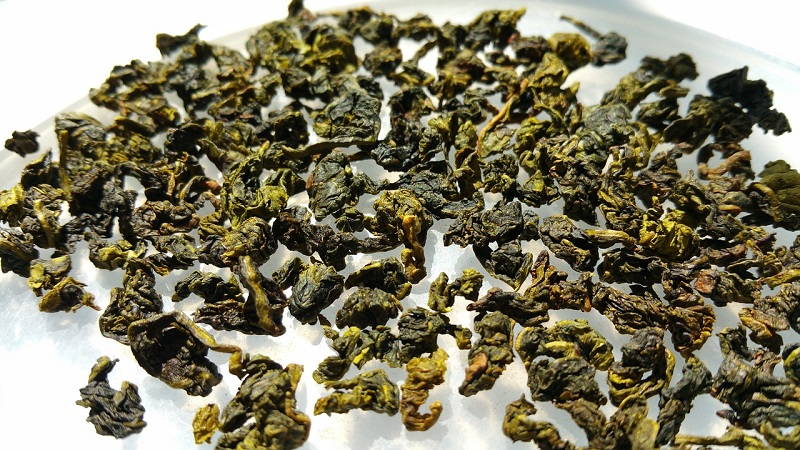
This unique beverage carries an impressive array of health benefits to match its delicious flavour, including increasing mineral density in bones (which helps to prevent osteoporosis), removing toxins from the skin, providing powerful antioxidants that act as a protective “buffer” for the body’s cells, and reducing the risk of cardiovascular disease.
As you can see, there is no shortage of health benefits when you decide to add herbal and natural teas to your nutritional regimen. Keep the above information in mind to help you select the tea that best suits your needs and personal preferences, and begin enjoying all of the outstanding health benefits that these amazing beverages have to offer!
Peppermint tea benefits
Made from an infusion of peppermint leaves in hot water, peppermint tea offers a clean and refreshing flavour, as well as several important health benefits.
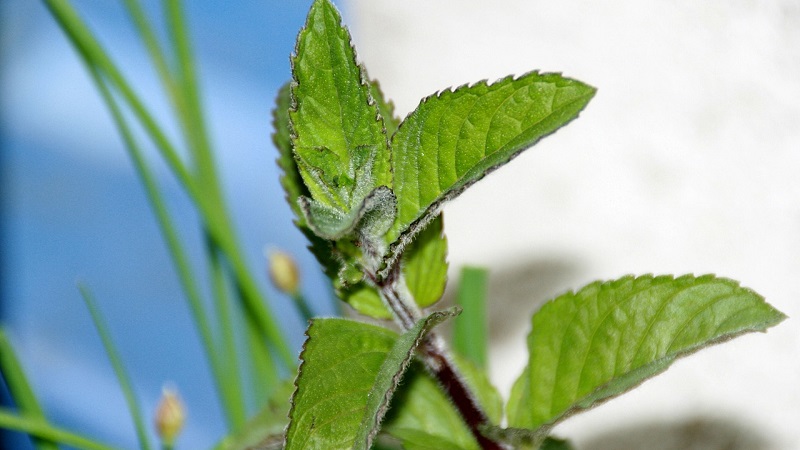
Peppermint tea has been widely cited for its ability to aid digestion, combat inflammation, boost the metabolism, reduce aches and pains, and fortify the immune system. The soothing, mentholated taste of peppermint tea stimulates the senses, and is widely considered to be one of the best ways to combat halitosis (bad breath).
Pu-erh tea benefits
Pu-erh tea is basically a black tea that has been taken through a special fermentation process. Perhaps the most notable benefit of pu-erh tea is that it acts as a natural statin, which means that it can lower levels of LDL (a.k.a. “bad”) cholesterol, thus reducing the risk of cardiovascular disease.
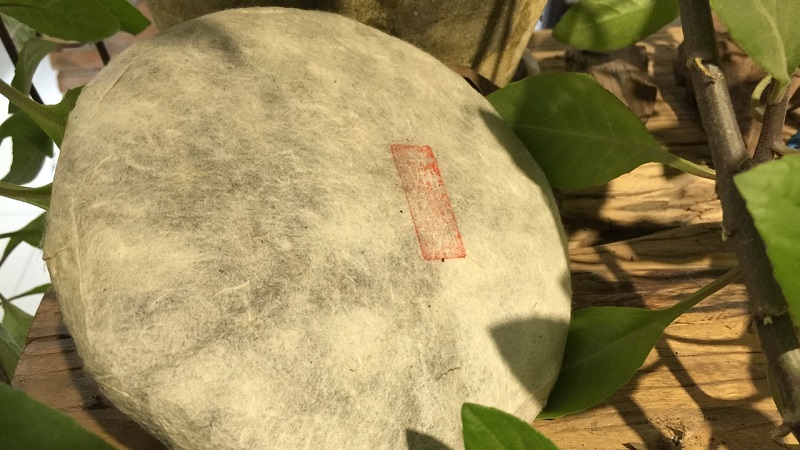
Pu-erh tea has also demonstrated substantial antioxidant properties; according to an article published by the International Journal of Molecular Science, researchers discovered that pu-erh tea can actually inhibit the growth of certain tumours.
Raspberry leaf tea benefits
Raspberry leaf tea is one of the most balanced natural foods in existence, which means that it can be consumed by practically anyone at any age or stage of life, without any ill side effects. This tea is particularly popular among pregnant women due to the many positive effects it produces in the area of reproductive health.
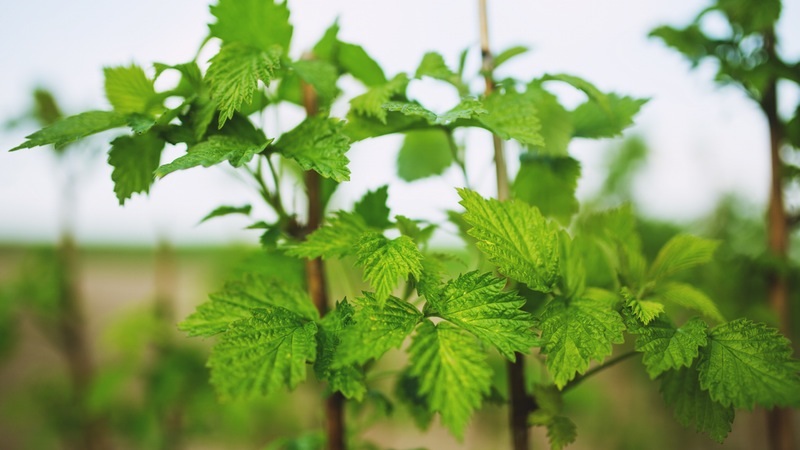
Raspberry leaf tea has been used for centuries as a natural remedy in order to boost female fertility. It contains special compounds that can actually strengthen the uterine wall by creating a smoother uterine lining, thus increasing the probability of implantation and reducing the chances of miscarriage. For women who are further along in their pregnancy, this special tea actually helps to reduce the swelling and cramps that are often associated with the later phases of gestation.
Red bush tea benefits
Red bush tea is cultivated from a small type of shrub found only in regions near Cape Town, South Africa. It has been hailed by South African natives for generations, but has become more and more popular in recent years due to the proliferation of positive information regarding this sweet-tasting beverage.
Red bush tea is packed with powerful antioxidants such as quercetin, which has been well-documented for its ability to protect the body against heart disease, cancer and diabetes. It also helps to relieve digestive problems, reduce swelling and inflammation, and improve sleep by staving off symptoms of insomnia.
Rooibos tea benefits
Red rooibos tea has earned a stellar reputation for its medicinal attributes, a fact that has been confirmed by the United States Department of Agriculture in Washington, D.C. Some of the notable benefits of rooibos tea that have been highlighted by the Department of Agriculture include reducing the risk of cancer and heart disease, as well as staving off the effects of premature aging.
Derived from the South African plant known as Aspalathus linearis, rooibos tea is also rich in several mineral contents including potassium, calcium, copper, manganese, and iron. Another important benefit of rooibos tea is that it contains no oxalic acid, which means that it can be consumed by people who suffer from kidney stones.
Sage tea benefits
Extracted from the Southern European plant known as salvia officinalis, sage tea has been used in traditional medicine for hundreds of years.
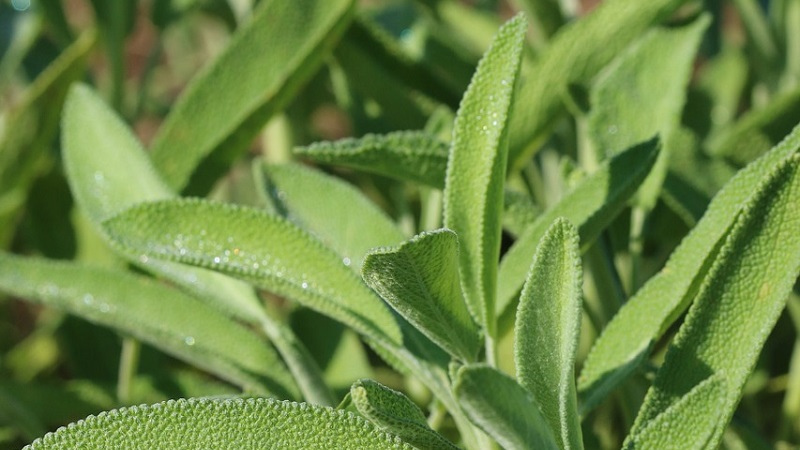
This powerful beverage features several important medicinal properties: It is a diuretic, an expectorant, and a stimulant all at the same time.
It also features a litany of anti-inflammatory, antimicrobial and antioxidant properties, all of which defend the body against an expansive range of physical ailments.
Turmeric tea benefits
Turmeric is well-known in Indian culture as a spice that provides an extra dose of zest to any curry mix. It is also the agent that provides the yellowish tint to the ubiquitous American condiment known as mustard.
Researchers have discovered a significant link between turmeric tea consumption and the reduction of symptoms of Alzheimer’s disease due to the drink’s ability to reduce inflammation in neural tissue. One other well-documented and highly important benefit of this time-honored beverage is its ability to battle inflammation and fend off symptoms of various cancers.
White tea benefits
White tea leaves actually come from the same plant as green tea, with the only difference being that they are harvested at an earlier point in time. Like its close counterpart, white tea is loaded with antioxidants, but even more so due to the fact that it is actually less processed than green tea.
These antioxidants play an important role in lowering cholesterol, improving cardiovascular health, boosting the metabolism, and reducing the risk of a wide variety of cancers.





Great insight there. Personally, I like to go herbal most of the time as there is always the promise of nature’s great taste.
I read somewhere that here in the UK, we are the 5th biggest tea drinkers in the world.
And I thought I was the only one with a fascination for a cuppa! 🙂
For me, tea is never really tea unless I have a lemon thrown in just for good measure. I do guess that it works differently for everyone.
Made some cream tea for a friend last week and she went absolutely mental about it! Loved it!
Wow, this is a great guide for tea. I like tea once in a while, but never really understood the differences in the types and how they impact your body. It would be great if I could grow my own green tea 🙂
Those tea fields look so mesmerizing. Thank you for posting the end all be all article to tea from around the world!